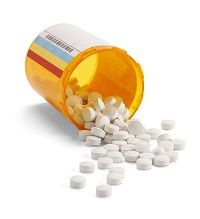Article
New Study Provides Hope for Chronic Lyme Disease Sufferers
Author(s):
Patients with Lyme disease know that their symptoms and the effects of the disease can be debilitating and last for a long time, often persisting even after treatment.

Patients with Lyme disease know that their symptoms and the effects of the disease can be debilitating and last for a long time, often persisting even after treatment.
In an effort to help improve quality of life for those patients, researchers at the Johns Hopkins Bloomberg School of Public Health are working on a test that would allow clinicians to more thoroughly check for bacteria left behind by the disease. Results from the test development were posted in PLOS ONE.
According to a statement from the researchers, the test will allow for a deeper look at “thousands of FDA-approved drugs to see if they will work against the bacteria that cause tick-borne Lyme disease.” The bacteria, known as Borrelia burgdorferi, have been difficult to check for up until this point.
Ying Zhan, MD, PhD, who led the research effort, said the test was based in a concept used for counting DNA samples in their labs. By making changes, they were able to see how many of the bacteria in a patient were still alive and how many were dead after interacting with the drugs.
“It’s superior to the current gold standard for testing Borrelia viability,” Zhang said. “This could become the new gold standard.”
One of the biggest differences between the SYBR Green I/PI assay, which was developed by Zhang’s team, and the LIVE/DEAD BAcLight assay is that the new version does not require each sample to be washed. “In skipping that step, the new test is not only more accurate but also more efficient, is less expensive and takes less time,” Zhang said in the statement.
Zhang added that even in the early stages they have seen positive results from medications used to treat other conditions that could prove beneficial for Lyme patients. Results of these tests were published in Emerging Microbes and Infections.
Some studies have estimated that up to 20% of all patients with Lyme disease may suffer long-term symptoms after their initial treatment period is done. This can include symptoms ranging from fatigue to musculoskeletal pain and memory issues. These patients have been diagnosed with a condition known as post-treatment Lyme disease syndrome or chronic Lyme disease.
Zhang said that the impact of the disease can be felt after treatment ends in part because some of the live bacteria remain active in the system after the drugs have finished. With no definitive test for the chronic condition or known drugs to treat it, Zhang said the team’s work can provide extra benefits in this area.
While some doctors have been providing off-label prescriptions of some drugs for the treatment of chronic Lyme disease, Zhang said it was important that further studies be done to ensure there will not be unnecessary adverse events as a result.
“There are a significant number of people who are sick and desperate for a cure for their Lyme disease symptoms months and even years after they have been told they are cured of the disease,” Zhang said. “The current drugs we use aren’t good enough for these persistent cases. This is why I have been getting so many calls and e-mails about our test and the drugs we have identified.”




